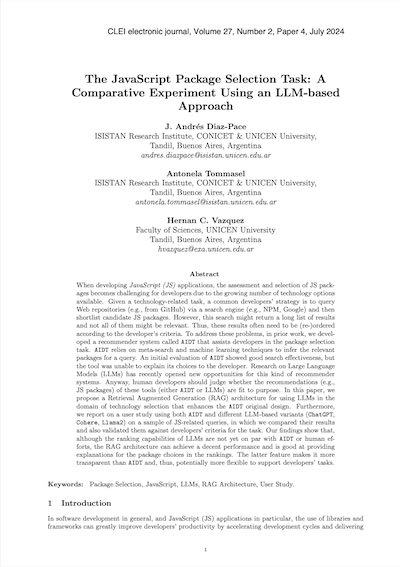Today's article comes from the CLEI Electronic Journal. The authors are Diaz-Pace et al., from the ISISTAN Research Institute, in Argentina. In this paper they attempt to build a RAG system that can help JavaScript Developers find packages faster and easier. If you've ever found it difficult to find an NPM package that suits your needs, then I think you'll like this paper.


You must be an active Journal Club member to access this content. If you're already a member, click the blue button to login. If you're not a member yet, click the sign-up button to get started.
Login to My Account
Sign Up